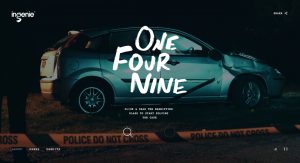//Sun Min (Chloe) Kim
//Section E
//sunmink@andrew.cmu.edu
//Project-01
function setup() {
createCanvas(500, 500);
background(217, 212, 235);
angleMode(DEGREES);
smooth();
}
function draw() {
//background strip
noStroke();
fill(210, 200, 300);
rect(0, 100, 500, 100);
rect(0, 300, 500, 100);
//hair(back)
noStroke();
fill(64, 60, 58);
ellipse(300, 200, 200, 220);
rect(200, 200, 200, 220);
//face
fill(247, 193, 155);
stroke(205, 149, 111);
strokeWeight(3);
ellipse(300, 210, 150, 160);
//eye
noStroke();
fill(255,255,255);
ellipse(270, 200, 30, 20);
ellipse(330, 200, 30, 20);
//nose
noStroke();
fill(211, 153, 114);
triangle(300, 200, 315, 235, 300, 230);
//mouth
fill(2250, 210, 195);
stroke(220, 130, 130);
strokeWeight(3);
arc(300, 245, 60, 40, 0, 180, CHORD);
//eyebrow
stroke(64, 60, 58);
strokeWeight(5);
line(250, 180, 285, 180);
line(310, 180, 345, 180);
//pupil
fill(64, 60, 58);
ellipse(270, 200, 12, 12);
ellipse(330, 200, 12, 12);
//neck
fill(247, 193, 155);
noStroke();
rect(280, 280, 40, 30);
//shoulder
noStroke();
fill(75, 70, 175);
ellipse(300, 385, 160, 160);
rect(220, 380, 160, 220);
//hair(front)
fill(64, 60, 58);
arc(250, 140, 90, 100, -50, 130, CHORD);
}
After completing Mondrian assignment, I became more familiar with p5js. Since I don’t have any experience in coding, it took me a while getting used to its language. Mondrian assignment helped me to get comfortable with rectangular shapes, but when I tried to create arcs and triangles for self-portrait it took me longer than I thought to create the codes. However, p5js guidelines helped me to learn ways to build various shapes, and I would like to find out more about adding advanced codes into my sketch.
![[OLD FALL 2017] 15-104 • Introduction to Computing for Creative Practice](../../../../wp-content/uploads/2020/08/stop-banner.png)

